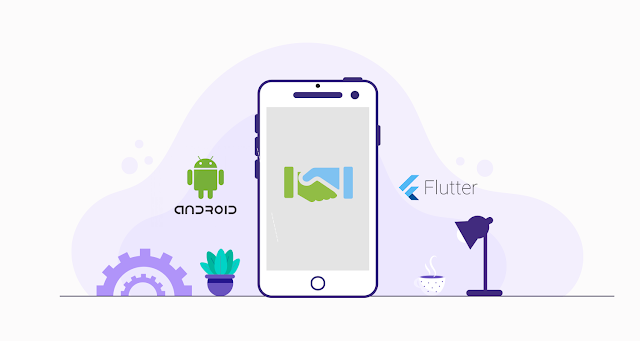Flutter has been
recently considered the future of mobile app development. Owing to its
incredible capability of developing cross-platform applications with having the
overwhelming support of Native app development. Especially for enterprise-level
applications, Flutter is an apt choice to develop an extensive OS of
applications including Android, iOS, Mac, Linux, Windows, and Web-based apps.
But the question
is why Flutter is the futuristic choice of Android app development and for
other operating systems.
In this blog, we
will find out the apt reasons for Flutter to bring the ideal one to take the
torch ahead to build an extensive variety of feature-rich apps.
What is
Flutter?
Flutter is a
cross-platform open-source UI software development kit. It is preferred to
develop applications for different operating systems on a single-based
codebase. Flutter app development offers sophisticated features, cross-platform
user experience, and uninterrupted app performance on different OS.
It is the
first-ever app development framework that comes packed with versatile
capabilities, a robust environment, and a complete ecosystem. In fact, Google
created the Flutter keeping in the mind the future of enterprise app
development and trends in mind.
You can hire
Flutter developers to build native apps for multiple platforms using the
same codebase and reduce time, effort, and cost. One of the reasons, Flutter
stands tall against other frameworks is due to providing the speed of 120fps on
mobile devices along with the updating rate of 120Hz.
How Flutter
is Better than Other Frameworks?
There is a
number of reasons that state the fact that Flutter has an edge over other
available frameworks and is the future of Android app development.
1. High-Level
Performance
One of the
reasons, Android developers prefer the Flutter framework is because of its high
performance as compared to the React Native.
React Native framework
utilizes the key UI building blocks that allow JavaScript to run on different
threads. And, a bridge is used to facilitate communication among the native
modules.
On the other
hand, Flutter combines everything from UI modules and app logic into machine
code. All this makes the Android app development process and performance go
fast and hassle-free.
2. Easy to
Set Up
Setting up the
Flutter framework is simple due to backed by the support of core Google
developers. It also comes packed with a comprehensive set of documentation that
helps developers to at different development levels of the project. It further
helps to deal swiftly with any issue by referring to the detailed documents.
Additionally, in-depth and well-articulated Flutter documents further help
developers to deal with any challenge within the project.
3. Leading
Coding Effort
Flutter ensures
a faster development process owing to its usage of Dart programming language.
It focuses on usability and ease of use factors that help to fasten up the
development process. Also, Google uses Dart as the programming language that
runs across multiple ranges of devices like desktop, tablet, laptop,
smartphone, etc.
4. Custom UI
Widgets
You can rely on
Flutter for a sophisticated level of Android app development for the enterprise
that comes with an object-oriented approach. It also comes with a variety of UI
features to make customized changes in the design as per the business
requirements. Also, Flutter offers manifold widget options using different
layouts to make specific changes in a hassle-free manner.
Another thing to
notice is that Flutter widgets can be wrapped into one another as per the
requirement. And, create a variety of functions irrespective of the platform it
is meant for.
5. Support of
Firebase
Flutter
framework is fully supported by Firebase from Google that helps in launching
mobile apps at a much faster rate. Also, backed by cloud storage, Flutter
further adds value to it.
So, Firebase
supports the Flutter app development to speed up server configuration that can
save a lot of time and resources. It further helps the developers to develop
the app from the backend and automate a few of the processes to scale up the
overall development process.
6. Less
Testing Load
It is a matter
of great concern for developers to thoroughly test the application before the
release. Necessary is to remove all the irregularities, bugs, and errors, well
in advance. But with Flutter, you can expect a fair amount of improvement in
the enterprise apps without needing much testing. Flutter helps to achieve a
better quality product by developing multiple native apps on one single
codebase that ensures quality, saves development cost, less testing, and time.
Wrapping Up
Flutter is a
viable option for enterprise app development, especially based on the Android
operating system. Certainly, it is the future of application development due to
offering fast performance, less testing, extensive libraries, and optimum
maintenance and support.
If you are
looking for Flutter app development services, then get in touch with
Mobibiz. It is a leading mobile app development company having special
expertise in developing Flutter apps for several operating systems.








